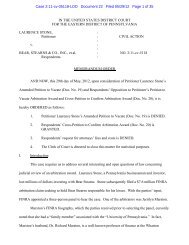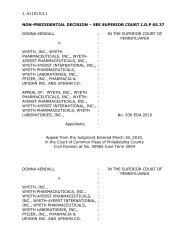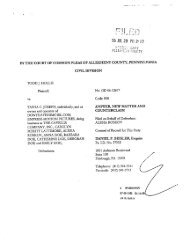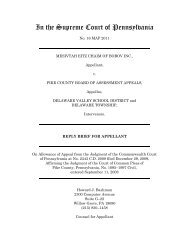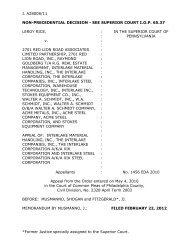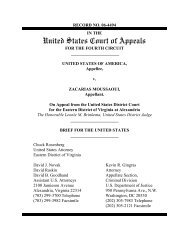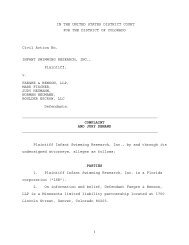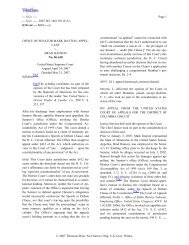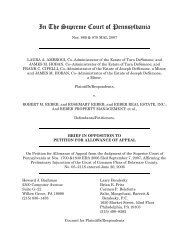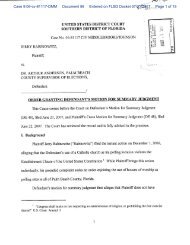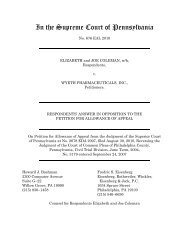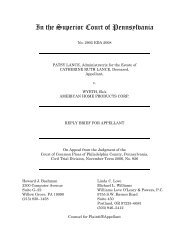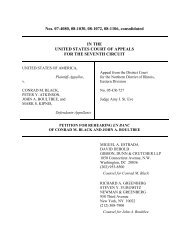DePinto v. Bayonne Board of Education
DePinto v. Bayonne Board of Education
DePinto v. Bayonne Board of Education
You also want an ePaper? Increase the reach of your titles
YUMPU automatically turns print PDFs into web optimized ePapers that Google loves.
Case 2:06-cv-05765-JAG-MCA Document 18 Filed 09/19/2007 Page 7 <strong>of</strong> 28<br />
A second exception arises in the context <strong>of</strong> school-sponsored activities. In Kuhlmeier,<br />
staff members <strong>of</strong> a high school newspaper sued the school when it refused to publish two<br />
articles. The articles addressed “three East Hazelwood [High School] students’ experiences with<br />
pregnancy [and] the impact <strong>of</strong> divorce on students at the school.” Kuhlmeier, 484 U.S. at 263.<br />
The school administration imposed its judgment and prevented publication <strong>of</strong> the articles because<br />
a) it was concerned about the secrecy <strong>of</strong> the identities <strong>of</strong> the pregnant students; b) the references<br />
to sexual activity and birth control were inappropriate for younger students; and c) the parents <strong>of</strong><br />
a student quoted in the article concerning divorce were not allowed to respond to allegations<br />
made in the article. Id. at 263.<br />
The Supreme Court reasoned that “educators do not <strong>of</strong>fend the First Amendment by<br />
exercising editorial control over the style and content <strong>of</strong> student speech in school-sponsored<br />
expressive activities so long as their actions are reasonably related to legitimate pedagogical<br />
concerns.” Id. at 273. 2<br />
The Second Circuit has recently summarized the holdings <strong>of</strong> the original three Supreme<br />
Court decisions:<br />
outlined only the basic principles from Fraser. Id. at 2626. First, Fraser demonstrates that “the<br />
constitutional rights <strong>of</strong> students in public school are not automatically coextensive with the rights<br />
<strong>of</strong> adults in other settings.” Id. Second, and more importantly for our purposes, Fraser<br />
established that the “substantial disruption” analysis in Tinker is not absolute. Id. at 2627. In<br />
other words, there are exceptions to Tinker.<br />
Because the Supreme Court has acknowledged that Fraser is an exception to Tinker, but<br />
has not clarified the debate on what that exception is, and because the Third Circuit has not<br />
specifically ruled on Fraser, this Court will interpret independently the Fraser exception later in<br />
this opinion. See Section II, A, 2, b, infra, 6-13.<br />
2 This Court addresses Kuhlmeier only briefly because neither party suggests that M.D.<br />
and A.L. are wearing the Button in connection with a school-sponsored activity.<br />
7



